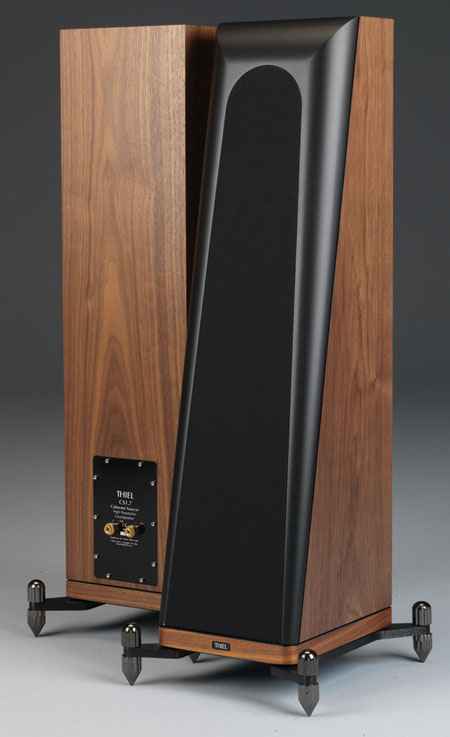Placement & Décor
In considering size, we did look at some placement options for a bookshelf speaker, such as wall or shelf mounting but there is more to consider in the areas of placement and décor. A floorstanding speaker, given its larger internal cabinet volume will generate greater bass output then a comparable bookshelf speaker. This greater bass output means the floorstander will have a greater propensity to generate standing waves within the room boundaries and excite room nodes, which could potentially compromise bass quality, specifically resulting in reduced bass definition. To compensate for this tendency, a floorstanding speaker will generally require greater attention to placement and further distance from surrounding walls than a comparable bookshelf speaker. This necessity to pull floorstanding speakers away from walls, can often present a challenge in the case of multi-use rooms. All of a sudden, the floorstanding speaker becomes a main element of décor – nothing to brag about on an interior design show, for sure. This is one area that a bookshelf speaker gains significant appeal over a floorstanding speaker, since bookshelf speakers with their lower bass output can generally be placed more easily and closer to walls – where they can have less impact on décor. Another factor is that bookshelf speakers generally sit on stands that have legs, and these less are less imposing and more delicate looking, making the bookshelf and stand seem smaller than the floorstanding speaker – a plus for any stiff décor requirements.
Power Handling
In our scenario, we are comparing a bookshelf speaker with a floorstanding speaker, where both speakers use the same tweeter and woofer and similar crossovers, with the difference between the two being limited to the enclosure/cabinet size. A larger enclosure is not a primary determinant of power handling capability (or maximum power handling) and so in our scenario, though we have two different types of speakers – the power handling capabilities, dictated by the crossover and driver will be the same. If we were not doing an apples-to-apples comparison and looking at a multi-driver floorstanding speaker, power handling would tip in favour of a floorstanding speaker but let’s keep with our scenario.
Sensitivity & Volume
Where all things, except enclosure size, are kept equal, a floorstanding speaker, given its greater internal cabinet volume, will be more efficient at producing sound than a bookshelf speaker. This greater efficiency is more commonly described in terms of sensitivity. Sensitivity is a measure of the sound pressure level (SPL) or output in decibels (dB) at a distance of 1 metre, for 1 Watt (W) of power input. A higher sensitivity rating means a higher output or louder sound for any level of power input. In short, with the same amount of power, the speaker with the higher sensitivity will produce a higher volume, at the same distance, in a room. Since our floorstanding speaker is more efficient, it will also have a greater sensitivity and therefore produce a higher volume with any given power level versus the comparable bookshelf speaker. So, if volume or amplifier power is a concern, it’s worth knowing that a floorstanding speaker will have an advantage over a bookshelf speaker. How much of an advantage is more difficult to determine, as other factors such as the specific difference in sensitivity, the room size and the power available from the amplifier must be considered.
Bass Extension
One of the definite advantages that a floorstanding speaker will have over a bookshelf speaker is in the area of low frequency bass extension. It’s a matter of physics – a greater internal cabinet volume will provide greater capability for low frequency extension. So the floorstander in our scenario will be able to produce lower bass notes, at a higher volume level, than the bookshelf speaker. The question is how much lower and how much more bass? Well, that depends on how much bigger the floorstanding speaker is and also on the design of the cabinet but rest assured to some degree, whether smaller or greater, the floorstanding speaker will be able to produce a greater quantity and lower frequencies of bass. Adding a subwoofer to a pair of bookshelf speakers will more than offset any difference in bass extension but our level playing field would be gone.
Advertisement: Shop for loudspeakers at the CANADA HiFi Shop (novo.press/shop).







